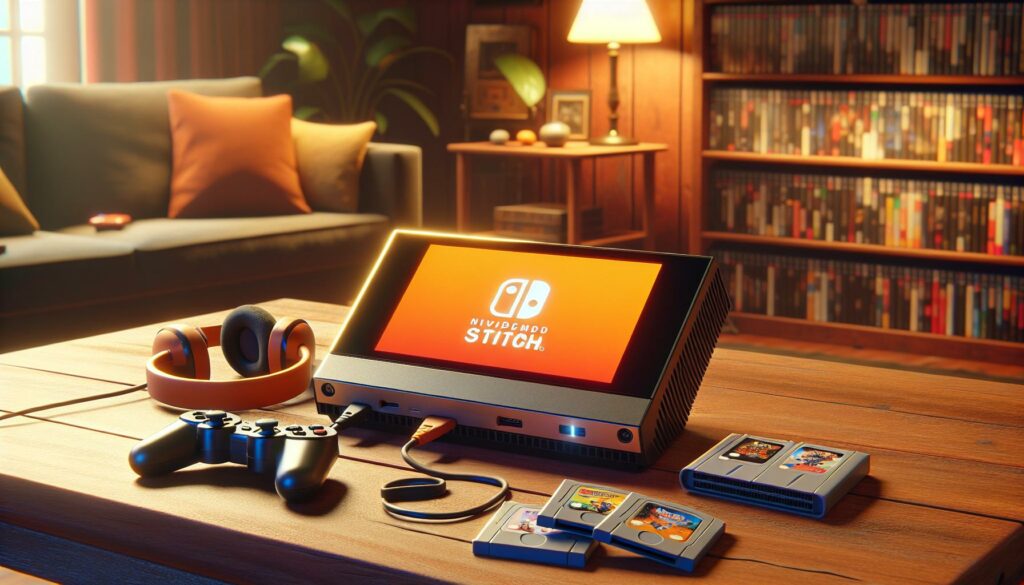If you’re a Nintendo Switch owner, you might have encountered the dreaded orange screen of death. This frustrating issue can strike at any moment, leaving you staring at a blank screen instead of diving into your favorite games. I know how disheartening it can be when your gaming experience is interrupted by technical glitches.
In this article, I’ll explore what causes the orange screen and share effective solutions to get your Switch back in action. Whether you’re a casual gamer or a hardcore enthusiast, knowing how to tackle this problem can save you time and restore your gaming joy. Let’s dive in and unravel the mystery behind this pesky issue.
Key Takeaways
- Understanding the Orange Screen: The Nintendo Switch Orange Screen of Death signifies a boot failure, often caused by hardware issues or software glitches.
- Common Symptoms: Key indicators include the console failing to start, distorted visuals during boot-up, and frequent screen freezes or crashes.
- Basic Troubleshooting Steps: Effective initial solutions involve performing a hard reset, charging the console, and checking for physical damage.
- Advanced Recovery Options: If basic methods fail, consider entering recovery mode to reset the console or reinstall the operating system, while ensuring data backups.
- Preventative Measures: To avoid future issues, keep the firmware updated, practice proper shutdown procedures, inspect for damages, and back up saved data regularly.
Nintendo Switch Orange Screen of Death
The Nintendo Switch Orange Screen of Death refers to a specific issue that users encounter when their console displays a blank orange screen during operation. This problem typically arises when the device fails to boot properly, rendering it unusable. Many factors contribute to this malfunction, including software glitches, hardware failures, and improper shutdowns.
Understanding the signs of the orange screen of death can help identify when troubleshooting is necessary. Users may notice unusual behaviors, such as the inability to start games, unexpected resets, or any display anomalies preceding the orange screen appearance.
To address this issue, users often need to employ various troubleshooting methods. Simple solutions might include performing a hard reset by holding down the power button or ensuring the console firmware is up to date. In more severe cases, hardware repair or replacement may be essential to restore functionality.
Recognizing the implications of the orange screen of death is crucial for maintaining an optimal gaming experience on the Nintendo Switch.
Common Causes of the Issue
Several factors contribute to the orange screen of death on the Nintendo Switch. Understanding these causes can help in identifying and resolving the problem effectively.
Hardware Failures
Hardware failures can lead to the orange screen of death. Issues with the console’s battery, motherboard, or display can prevent it from booting properly. For instance, a damaged battery may fail to supply adequate power, resulting in an inability to start the device. Furthermore, motherboard malfunctions can disrupt communication between components, causing the console to freeze on an orange screen. Regular inspection for physical damage can aid in early detection of these issues.
Software Glitches
Software glitches often trigger the orange screen of death. Problems might arise from recent system updates that introduce bugs, corrupt files, or conflicts with existing applications. A common example occurs when the console tries to load a game with corrupted data, causing it to stall. Additionally, improper shutdowns can disrupt the operating system, leading to boot issues. Keeping the software up to date and performing routine maintenance can reduce the risk of these glitches.
Symptoms of the Orange Screen of Death
Identifying the orange screen of death on a Nintendo Switch involves recognizing specific symptoms. Early detection allows for quicker troubleshooting and potential resolution.
Initial Signs
Users may notice initial signs before the screen turns orange. Symptoms include:
- The Nintendo Switch console failing to start while the power button is pressed.
- The display remaining blank or giving distorted visuals during boot-up.
- The console freezing during initial startup, preventing access to the home screen.
- Unexpected resets or crashes during gameplay, particularly following a software update.
Progression of the Issue
As the issue progresses, symptoms may intensify. This can manifest as:
- Frequent freezing of the screen, often necessitating a hard reset.
- Increasing instances of error messages appearing but failing to resolve themselves.
- The inability to launch games or applications, severely disrupting gaming experiences.
- Complete failure to recognize the console’s existence on the charging dock, indicating possible hardware failure.
Prompt recognition of these symptoms aids in effective troubleshooting and mitigating further issues.
Troubleshooting Steps
When dealing with the Nintendo Switch orange screen of death, several troubleshooting steps can restore functionality. These steps range from basic solutions to more advanced measures for persistent issues.
Basic Solutions
- Perform a Hard Reset: To reset the console, press and hold the Power button for 12 seconds. This method can resolve minor glitches and restart the booting process.
- Charge the Console: Ensure the console connects to its charger and check for the charging indicator light. If the battery is drained, letting it charge for at least 30 minutes may restore functionality.
- Check for Physical Damage: Inspect the console for any visible damage, particularly around ports and connectors. Addressing any physical issues may prevent further problems.
- Update Firmware: If access allows, navigate to System Settings and select System Update. Keeping the firmware current can help eliminate software-related glitches that cause the orange screen.
- Enter Recovery Mode: To access the recovery menu, hold down Volume Up + Volume Down while pressing the Power button. From here, select “”Initialize Console Without Deleting Save Data.”” This option can resolve deeper software issues.
- Reinstall the Operating System: Backup save data via cloud saves if possible. Then, enter recovery mode and select “Initialize Console.”” This action deletes all data and reinstalls the operating system, potentially fixing persistent issues.
- Inspect the Battery and Connections: If hardware issues persist, examine the battery and internal connections for damage. Loose or damaged components can prevent the console from booting correctly.
- Seek Professional Repair: If all troubleshooting fails, consider reaching out to Nintendo Support or local repair services. Professional help may be necessary for hardware failures or complex software problems.
Preventative Measures
To avoid encountering the orange screen of death on my Nintendo Switch, I follow several proactive steps that reduce the risk of hardware and software failures.
- Regular Updates: I ensure the console’s firmware stays updated. This practice helps prevent software glitches that might trigger booting issues.
- Proper Shutdowns: I always shut down my console appropriately. Abrupt power loss can lead to corrupted files and boot failures.
- Safe Charging Practices: I use the official charger and avoid charging the console overnight. This approach minimizes battery strain and potential malfunctions.
- Routine Inspections: I regularly check for any physical damage, focusing on the screen and charging port. Early detection allows me to address potential issues before they worsen.
- Data Backup: I back up my saved data frequently. Using cloud saves or external storage ensures I don’t lose progress if troubleshooting becomes necessary.
- Application Management: I monitor installed games and applications for updates and potential conflicts. Removing any problematic software reduces the likelihood of encountering errors.
By implementing these preventative measures, I significantly enhance my Nintendo Switch’s reliability and performance, reducing the chances of facing the orange screen of death.
Keeps Gaming Sessions Enjoyable
Dealing with the orange screen of death on my Nintendo Switch can be frustrating and disruptive. However understanding the causes and symptoms empowers me to troubleshoot effectively. By taking proactive steps like keeping my firmware updated and practicing proper shutdowns, I can significantly reduce the risk of encountering this issue.
If I do face the orange screen, knowing the right troubleshooting methods helps me restore my gaming experience quickly. Whether it’s a simple hard reset or seeking professional help for hardware problems, staying informed makes all the difference. I hope this guide helps fellow gamers navigate this common challenge and keeps our gaming sessions enjoyable and uninterrupted.

